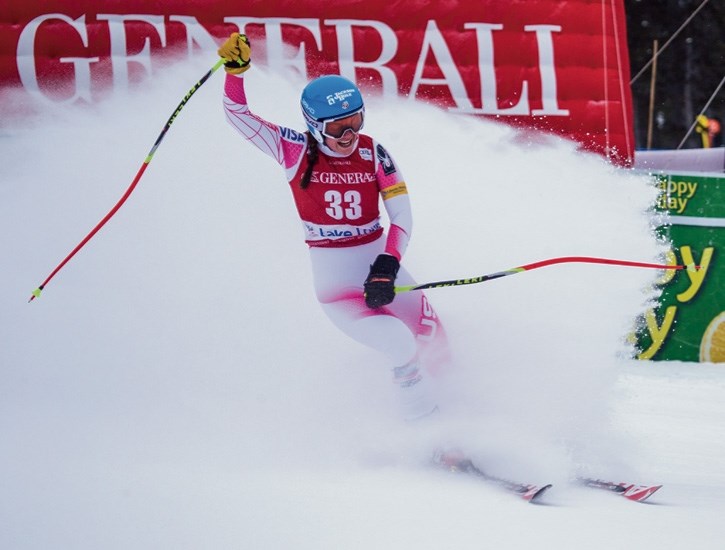With water flows too low in the Pipestone River, Lake Louise ski resort wants to urgently draw water from the hamlet's main underground water source to get going on snowmaking.
With water flows too low in the Pipestone River, Lake Louise ski resort wants to urgently draw water from the hamlet's main underground water source to get going on snowmaking.
The Pipestone is the ski hill's water source for snowmaking, but Parks Canada prohibits this when the river flow drops below 90 per cent of historic flow levels to protect aquatic life.
As an alternative, Parks is set to approve the ski hill's request to install a temporary, above-ground, two-kilometre long pipe system to carry water from groundwater wells in the hamlet to the resort's pumping station – something done in 2003 as well.
Park officials say that following a historically dry, hot summer, water flows in the Pipestone are currently below acceptable thresholds established in previous agreements.
“This is really about Parks Canada making sure aquatic habitat and aquatic life is protected,” said Alex Kolesch, Parks Canada's manager of land use, policy and planning for Lake Louise, Yoho and Kootenay.
Responding to what it calls an urgent water situation with the opening date scheduled for Nov. 10 and men's world cup downhill later that month, the ski hill wants to take water from two deep wells in the hamlet to make snow for winter 2017-18.
Ski hill officials say there are considerable economic risks that are shared by all businesses in the Lake Louise area if snowmaking cannot be secured, noting the success of winter tourism industry at Lake Louise is directly tied to the ski hill's success.
Dan Markham, Lake Louise ski resort's director of brand and marketing, said the resort is allowed to start drawing water from the river on Oct. 15 each year to start snowmaking, but will be behind schedule given that is not an option this year.
“Mother Nature is sort of coming around, but we do rely on snowmaking at the early part of the season,” said Markham. “We have done this in the past when water levels are too low.”
If approved, the ski hill will withdraw a maximum of 190,000 cubic metres of water from two existing ground water wells at the Fairview staff housing site. The withdrawal will supersede some or all of the water normally withdrawn from the Pipestone River.
A detailed environmental analysis for the project was released Sunday (Oct. 15) for public review. The deadline for public responses is Friday (Oct. 20), something that is not sitting well with the environmental community which states a five-day deadline is unacceptable.
Conservationists say the need to tap into the community drinking water aquifer for snow making for the 2017-18 season highlights how dependent the ski hill is on water for snowmaking, and the unreliability of existing water resources.
“This is particularity concerning in light of future proposed terrain development and increased skier days, both of which will require enhanced snowmaking and significantly more water,” said Reg Bunyan, a spokesperson for Bow Valley Naturalists.
With proper monitoring, Bunyan said, the aquifer draw down may or may not pose a short-term threat to the community's water supply, but said this isn't the ski area's first use of the aquifer, nor is it likely to be the last.
“With global warming and potentially even more inconsistent future water flows, it's important the ski area not become economically dependent, or in conflict with the Lake Louise townsite water supply,” he said.
Bow Valley Naturalists took issue with the process and lack of public scrutiny over issues at Lake Louise, noting a five-day public comment period is concerning.
Bunyan said the original strategic environmental assessment and site guidelines for the ski hill were rushed through with very little public scrutiny.
“Unfortunately, the pattern continues with this latest environmental assessment allowing only five days business days for review and comment,” he said.
“Whether you agree or disagree on the issue of whether impact of the proposed water withdrawal is acceptable, I would hope we could all agree that the process lacks transparency and meaningful consultation.”
Kolesch said the existing environmental impact assessment is similar to one done before 2003 when the ski hill last used this alternative water source, noting the results and analysis this time were similar.
He said he believes five days is enough time to get public comment “under these circumstances.”
Meanwhile, Kolesch said Lake Louise ski hill will be required to do ongoing monitoring of the aquifer, and share the results with Parks Canada.
“There's no indication that there will be significant impact to aquifer, or surface based on monitoring that's been done over the past decade,” he said.
